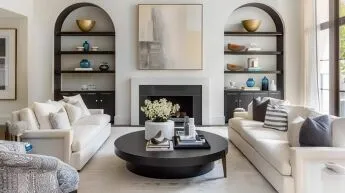In today’s competitive marketplace, the interior design of commercial spaces plays a pivotal role in shaping a business’s identity and customer experience. A well-designed commercial environment not only attracts clients but also enhances employee productivity and satisfaction. As business needs evolve, so do the trends in commercial interior design, blending aesthetics with functionality to create spaces that inspire and perform.
For those seeking expert guidance and innovative ideas, exploring professional insights on commercial design interiors offers valuable perspectives on how to craft business spaces that stand out in Malaysia’s dynamic market.
Emphasis on Flexible and Adaptive Spaces
One of the dominant trends in commercial interior design is the focus on flexibility. Modern businesses require spaces that can easily adapt to changing needs—whether for team collaboration, private meetings, or individual work. Modular furniture, movable partitions, and convertible rooms enable companies to reconfigure layouts quickly without costly renovations.
This approach is especially relevant in retail and office settings where varying customer flows and team dynamics demand versatile environments. The flexibility to transform a space fosters creativity and responsiveness, key attributes for today’s agile businesses.
Integration of Technology for Enhanced Experience
Technology is seamlessly integrated into commercial interiors to improve both functionality and customer engagement. Smart lighting, automated climate control, and interactive digital displays contribute to an environment that is comfortable and efficient.
In retail settings, technology such as augmented reality (AR) and virtual reality (VR) enhances shopping experiences, allowing customers to visualize products in new ways. Offices utilize video conferencing tools and wireless charging stations to support connectivity and productivity.
By embracing technology, commercial spaces become more user-friendly and innovative, catering to tech-savvy clients and employees.
Focus on Sustainability and Eco-Friendly Design
Sustainability remains a significant priority in commercial interior design. Businesses increasingly seek eco-friendly materials, energy-efficient lighting, and waste reduction strategies to minimize their environmental impact.
Natural elements such as indoor plants, reclaimed wood, and biodegradable finishes create healthier spaces while reinforcing a company’s commitment to green practices. Energy-efficient HVAC systems and solar panels reduce operational costs and support sustainable business models.
In Malaysia, where environmental awareness is growing, incorporating sustainable design not only benefits the planet but also appeals to environmentally conscious customers and employees.
Biophilic Design: Bringing Nature Indoors
Biophilic design, which integrates natural elements into built environments, continues to gain popularity. Features like living walls, indoor gardens, and large windows that allow natural light create calming atmospheres that boost well-being and reduce stress.
This connection to nature enhances creativity and focus among employees and invites customers to relax and engage more deeply with the space. Using materials that mimic natural textures and colors further strengthens this bond, creating a cohesive and inviting environment.
Minimalism with a Touch of Personality
Minimalism remains a key aesthetic in commercial interiors, characterized by clean lines, open spaces, and neutral color palettes. This approach fosters a clutter-free environment that promotes clarity and efficiency.
However, purely minimalistic spaces can sometimes feel sterile. To counter this, designers are incorporating personal and cultural touches through artwork, unique furnishings, and accent colors. This adds warmth and identity, helping brands communicate their values and connect emotionally with visitors.
Enhanced Lighting Design
Lighting is increasingly recognized as a powerful tool in commercial design. Beyond illumination, it sets moods, highlights features, and influences customer behavior. Layered lighting combining ambient, task, and accent lights creates depth and interest.
In retail, spotlighting products draws attention to key items, while in office spaces, adjustable lighting supports various work tasks and reduces eye strain. Natural light is maximized wherever possible to enhance energy savings and improve health outcomes.
Prioritizing Employee Wellness and Comfort
Workplace wellness has become integral to commercial interior design. Ergonomic furniture, quiet zones, and spaces for relaxation are essential for supporting mental and physical health.
Designs now include wellness rooms, fitness areas, and access to outdoor spaces, all contributing to higher job satisfaction and productivity. Healthy materials that improve indoor air quality and reduce allergens are also prioritized.
Smart Storage and Organization
Effective storage solutions help maintain neat and functional commercial spaces. Custom cabinetry, built-in shelves, and modular units reduce clutter and optimize space usage.
Well-organized environments enhance operational efficiency and create a more pleasant experience for both employees and customers.
Conclusion
Trends in commercial interior design focus on creating business spaces that balance beauty with practicality, foster adaptability, and support sustainability. By integrating technology, nature, and wellness, while maintaining minimalist elegance and personalized touches, businesses can craft environments that impress clients and empower employees.
Drawing on expert resources like commercial design interiors professionals in Malaysia ensures access to the latest innovations and design principles tailored to local markets. Adopting these trends allows companies to remain competitive and create meaningful connections through thoughtfully designed spaces.

